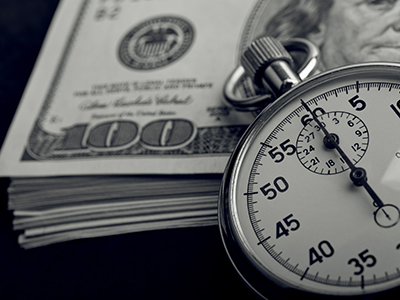
In a break from federal law, the California Supreme Court clarified in Alvarado v. Dart Container Corp. the proper formula for calculating flat-rate bonuses into overtime pay under California law. The Court adopted the Plaintiff’s position and held that, for purposes of calculating the per-hour value of a flat rate bonus, the divisor should be the number of nonovertime hours the employee worked in the pay period rather than all hours worked during the pay period.
For example, imagine an employee who works 48 hours during a workweek: 40 nonovertime hours and 8 overtime hours. That same employee earns a flat bonus of $100 for every weekend shift he takes regardless of the number of hours worked during the week. For purposes of calculating the employee’s overtime pay due to the flat rate bonus, the Court clarified that the regular rate calculation for that bonus requires the employer to divide the flat bonus amount by the number of nonovertime hours worked (however many nonovertime hours that may be, up to a maximum of 40, as in this hypothetical). The resulting number is multiplied by 1.5 to find the hourly overtime rate due to bonus pay, which is then multiplied by the total number of overtime hours worked in the calculation period to determine the overtime amount owed based on the flat rate bonus. This method results in a higher regular rate for purposes of calculating overtime based on the bonus than the normal regular rate that is used to calculate overtime based on hourly wages, commissions, piece rates or production bonuses.
Under federal law, in contrast, the total remuneration (hourly wages plus bonus) would be divided by 48 hours, i.e. the total hours worked. The Defendant argued that its practice in using the total hours worked to calculate the regular rate was valid because it followed federal law. The trial court and court of appeal in this case had held that the Defendant’s method was lawful, noting that the overtime calculation guidelines in the California Division of Labor Standards Enforcement (DLSE) Manual (which the Plaintiff here was advocating as the correct calculation) did not have the force of law.
Although the Supreme Court agreed that the applicable provision in the DLSE Manual is a void underground regulation, the Court nevertheless found the Manual persuasive and agreed with the Manual’s explanation of how to calculate overtime based on a flat rate bonus. The Court acknowledged that there was no binding precedent that addressed this precise issue, but in ruling against the federal method, the Court stressed California’s state policy found in Labor Code section 510, which favors an eight-hour workday and 40-hour workweek and discourages employers from imposing work in excess of those limits.
Notably, the DLSE Manual also states in other sections that commissions, piece rates and production bonuses factor into overtime calculations in the same way as under the FLSA. The Court referenced this is passing, and the Alvarado holding here should not impact how overtime is calculated in relation to commissions, piece rates and production bonuses.
California employers who currently follow the federal formula in relation to flat rate bonuses must now review their policies to ensure compliance with the Alvarado decision. The Defendant here argued that the Court’s decision should not be given retroactive effect, but the Court rather stingingly rejected this argument. Accordingly, it is likely that the plaintiff’s bar will be looking for employers who have used flat rate bonuses and file class actions against them.

